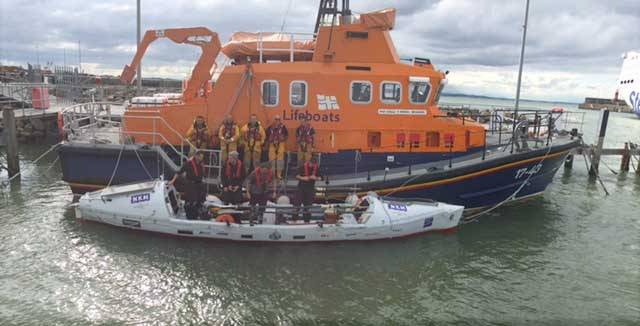Rosslare Harbour RNLI launched last night to four young men attempting a record-breaking row off the UK coast after they requested assistance in worsening weather conditions. They were brought to safety by Rosslare Harbour RNLI in a call out that lasted over six hours as the all-weather lifeboat towed the 24-foot rowing boat out of the channel and back to the safety of Rosslare harbour.
The four young rowers have had to set aside their record attempt after setting off from Tower in London 10 days ago to row around the UK coast. After leaving London they came up through Bristol channel and out into the open sea. However the weather was worsening last night and they found themselves battling the elements 22 miles off the Irish coast. Conditions were fresh with a north north-westerly wind gusting 25 knots. It was then hey made the decision to contact the Coast Guard and request help.
Volunteer lifeboat crew at Rosslare Harbour RNLI received the call at 6.15pm and launched in minutes. When on scene an hour later they checked if the young men were okay before establishing a tow and bringing the craft back slowly so as not to part the tow to the safety of Rosslare Harbour. The tow took six hours. The four rowers are currently being looked after in Rosslare before they decide on their next move.
Commenting on the call out Rosslare RNLI Lifeboat Operations Manager David Maloney said: ‘This call out was a good example of people recognising the importance of calling for help early when they realise they may be getting into difficulty. The group were dealing with worsening weather conditions and a changing tide which was taking them further from where they needed to be, all while they were mid-channel on a record attempt.’
However they didn’t let this sway them and raised the alarm bringing help. They had the right safety equipment and made a call quickly. If they had waited until things got worse and help was not close enough, it could have ended very differently. I have no doubt they will achieve any records they set their mind to in future.’































































